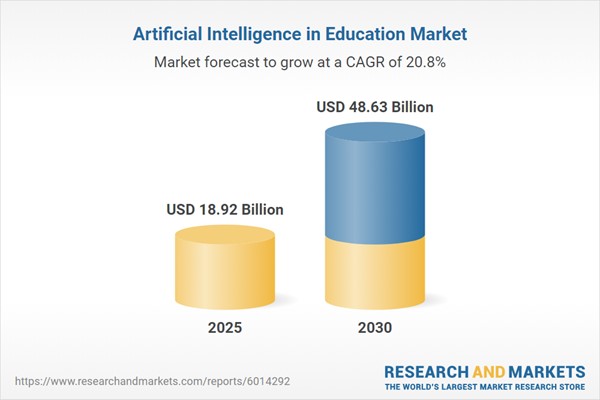Beyond Lesson Plans: AI's Role in Personalized Professional Development
14th July 2025

Did you know that the global AI in education market is projected to reach USD 48.63 billion by 2030?

As artificial intelligence continues to reshape industries, education, especially teacher training, is undergoing a drastic shift. Today, AI-powered learning paths are transforming how educators enhance their skills, equipping them with real-time feedback, adaptive modules, and tailored content that meet their individual teaching goals.
Those educational leaders or teachers who have pursued courses like the Diploma in Educational Administration and Management Course, know how from streamlining lesson design to customize professional development, AI is opening up new possibilities to grow, engage, and lead with precision.
If you also want to learn how AI is helping teachers and educational leaders, from creating lesson plans to personalizing teachers' training, then keep reading further.
How AI is Reshaping Teacher Training
1. Personalized Learning at Scale
AI algorithms analyze teachers’ previous knowledge, learning behavior, and pace to curate personalized content. This means two educators in the same training can take completely different paths based on their strengths and gaps.
2. Real-Time Feedback for Immediate Growth
Through interactive platforms, teachers receive instant feedback on lesson plans, classroom strategies, and even virtual teaching simulations. AI helps pinpoint exactly where improvements are needed and offers suggestions tailored to the context.
3. Data-Driven Professional Development
AI collects and processes performance data to track progress over time. Educators no longer rely on outdated assessments—they benefit from dynamic insights that fuel continuous improvement and actionable goals.
4. Adaptive Assessment and Content Delivery
Unlike traditional assessments, AI-enabled quizzes and evaluations adapt in real time to a learner’s response. This ensures mastery before progressing and keeps engagement high throughout the training process.
5. Customized Microlearning Modules
Busy educators can now access bite-sized learning modules based on their schedules and immediate classroom needs. AI curates what’s most relevant—whether it’s classroom management tips, leadership training, or subject-specific strategies.
Why This Matters Now More Than Ever
With growing demands on teachers to innovate in the classroom and adapt to evolving student needs, traditional training methods are falling short. AI bridges that gap by:
- Saving time with smart content curation
- Empowering educators with insights they can act on
- Elevating the quality of education delivered in classrooms
- Supporting differentiated instruction strategies across subjects
For aspiring school leaders, an Online Diploma Course in Educational Administration and Management can offer the added advantage of AI-backed content delivery, enabling a more immersive, outcome-driven learning experience.
Final Thoughts
AI is not just a buzzword, it’s a powerful tool that’s personalizing the journey from lesson planning to professional mastery. For educators, it means relevant, flexible, and impactful learning that evolves with their careers. For institutions, it means stronger leadership, better teaching outcomes, and a thriving learning culture.
Whether you're stepping into an academic leadership role or upgrading your teaching toolkit, choosing a program like the Diploma in Educational Administration and Management Course can be your gateway to a smarter, AI-powered future in education.
FAQ(Frequently based Questions)
1. How is AI used in teacher training programs?
AI is used to automate lesson planning, create personalized learning experiences, analyze student data for better teaching strategies, and assist in grading, content creation, and professional development support.
2. Can AI improve personalized learning for students?
Yes. AI tailors learning materials based on each student’s strengths and weaknesses, provides adaptive assessments, and recommends activities suited to individual learning styles and progress levels.
3. What are the benefits of using AI tools for teachers?
AI helps teachers save time on administrative tasks, improves lesson engagement through interactive content, supports differentiated instruction, and inspires innovative teaching methods.
4. Are AI tools replacing teachers?
No. AI enhances a teacher’s capabilities but cannot replace the human connection, empathy, and real-time decision-making that educators bring to the classroom.
5. How can I start using AI in my teaching practice?
Start small by using free or low-cost AI tools like ChatGPT for content creation, Canva’s Magic Write for design ideas, or adaptive learning platforms like Quizizz and Khanmigo for personalized student engagement.
6. What skills do educators need to effectively use AI in classrooms?
Educators should understand basic AI literacy, data interpretation, digital content curation, ethical use of AI, and how to evaluate edtech tools for instructional value.
7. Can AI help with professional development for teachers?
Absolutely. AI provides curated learning paths, summarizes research papers, offers skill-based learning recommendations, and supports collaboration among educators through AI-enhanced platforms.
Written By: Sheetal Sharma